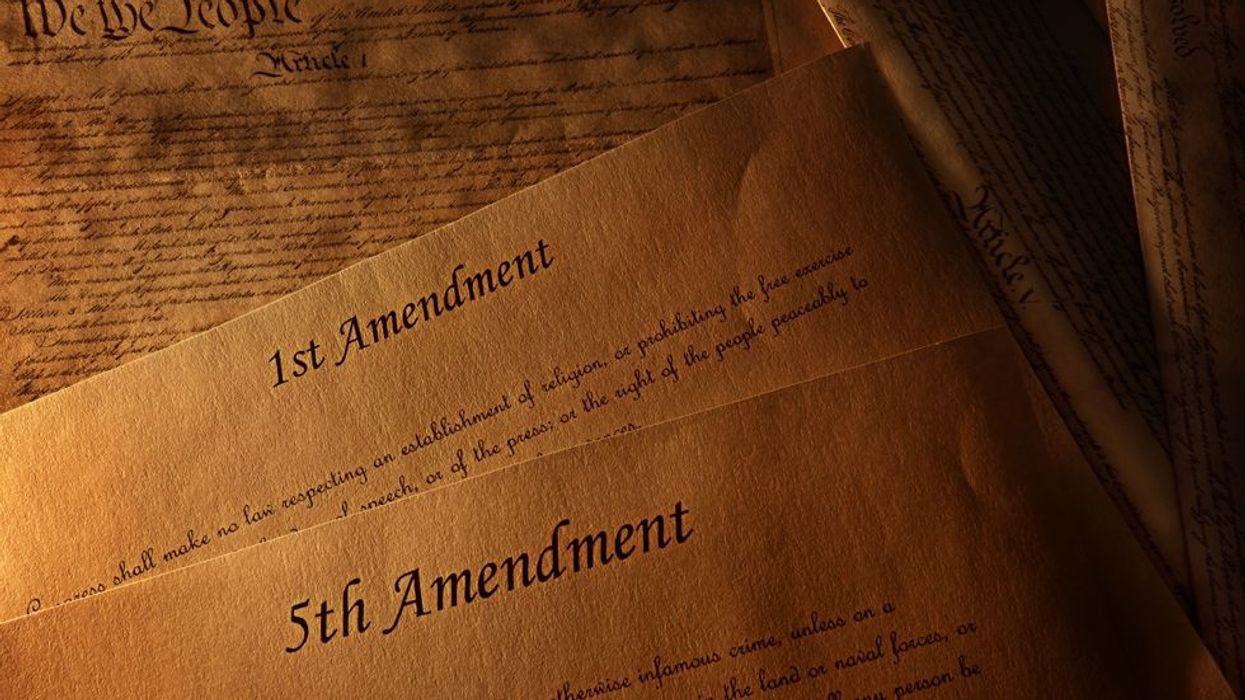LaRue writes at Structure Matters. He is former deputy director of the Eisenhower Institute and of the American Society of International Law.
Amending the Constitution is increasingly necessary, whether to replace the Electoral College or to guarantee the right to vote. But the usual question – “It’s too difficult, so why bother?” – is being overtaken. Now we ask, “Will we ever amend the Constitution again?”
History provides both hope and a firm “Yes.” Two facts matter: Decades-long gaps between waves of amendments are the norm, and – late in these gaps – thought leaders and attentive citizens deem it impossible to amend the Constitution. Both conditions apply today, much as they did in the years before 1913, when an amendment wave began.
Before parsing the onset of the Progressive Era’s four amendments, let’s look at the timing for the amendment waves and gaps throughout U.S. history. Most amendments have clustered in decade-long waves, followed by gaps of four or more decades without any amendments or only more random ones. Along with the Progressive Era’s wave in the 1910s, there were the three Reconstruction amendments in the 1860s, and four civil rights amendments in the 1960s. (Careful observers will note that these waves can extend a year or two into the next decade; e.g., the 26th Amendment lowering the voting age to 18 was ratified in 1971.)
There are occasional random or “patch” amendments between these waves. But they have been either extraordinary (repealing Prohibition or limiting presidents to two terms after FDR served four) or minor and technical (shifting Inauguration Day or tweaking how congressional pay raises are implemented). They have occurred independently of the cyclical waxing and waning of the civic energy required of amendment politics.
Going back to the period before the Progressive Era, the gap between the 15th and 16th amendments lasted 43 years (1870 to 1913). It was marked by the rise of the highly divisive Gilded Age, which peaked toward the gap’s end. At its zenith, thought leaders like award-winning historian Herman Ames, Princeton scholar Woodrow Wilson, and the editorial board of The Washington Post were declaring the Constitution “ unamendable.”
Just over a decade later they were resoundingly proved wrong. The problems of unbridled capitalism and corrupt ascension to the Senate via state legislatures were rampant. They became so bad that a federal income tax (the 16th Amendment) and direct elections of Senators (17th Amendment) were added to the Constitution in the same year. The Progressive Era wave ended in 1920, when the 19th Amendment granted women the right to vote. The succeeding gap until the first civil rights era amendment was ratified in 1961 was another four decades.
We are now more than five decades past the prior wave’s last amendment in 1971. While this gap is longer than those between the three prior waves, it is still shorter than the 74-year gap between ratification of the Bill of Rights in 1791 and the onset of the Reconstruction Era amendments in 1865 (yes, there were two patch amendments early in the gap).
The key takeaway from this “gap analysis” is that before each amendment wave, political divisions sharpened and were often destructive. As each gap lengthened, elections or legislation alone could not address the rising social and political conflicts. The results? Civil war, extreme income inequality and labor exploitation, and stark racial, gender, and generational conflict. Amendments, previously considered distracting or impossible, became key release valves for the country to step away from the edge or climb back out of the crevasse. To varying degrees, their role was to restore a sense of national balance if not unity.
Today’s red-blue divide has continued to grow as the latest amendment gap has lengthened. This relationship may be neither direct nor causal. And the variables today, from social media to the erosion of the truth, are vastly different from those in prior gaps. But the variables were always different before each amendment wave. The pattern still held.
Amendments won’t happen this, or next, year. But what about in seven or eight years, or perhaps 13, when we can celebrate the 250th anniversary of the Constitution in 2037 by repairing it? The only thing we can say with any confidence about the politics of tomorrow is that it won’t be like the politics of today. It could be worse. But it could be better.
I am betting on the latter (although things could initially worsen). And perhaps we could pass amendments that help us step away from the undemocratic edge we seem to be getting closer to. I’ll have more to say about such amendments in future writings.
For now, we can do two things. First, we need to recognize the validity of Rick Hasen’s observation in his latest book, “A Real Right to Vote.” His compelling case for an affirmative constitutional guarantee of the right to vote includes the assertion that "[a]mending the Constitution ... is probably the means of election reform with the greatest chance of securing real and lasting change." This must become our guidestar as we navigate the election reform landscape.
Second, we can hope that our nation’s divisions today prove more like those of the 1900s or 1950s, and not the 1850s. Whatever follows our current, lengthening amendment gap, it will need to include foundational responses. Constitutional solutions may not come first (e.g., low-turnout, partisan primaries decided by plurality outcomes need to go), but amendments can’t be far behind.





















